
Which architect worth her salt has not heard of Sullivan's cardinal rule 'form Sollows function'? And yet, every city has its share of structures that are good to behold, but miserably fail in functionality. Unfortunately, knowing what matters is not the same as doing what matters. This anomaly is evident even in landscape projects. While manicured landscapes can be spectacular, they stand alienated from the surrounding natural landscape. Designing for beauty often disregards vital biophysical characteristics of the land. Such designs are ecologically cut off from the larger natural ecosystems.
Eugene Viollet-le-Duc, the French restoration architect conceptualized excellence in architecture on how its structure is designed. He believed that each element should be joined to the next and the whole in a manner analogous to the composition of an organic body. Ecologists couldn't agree more. This is how ecosystems are built, and that is why they support us with indispensable life-sustaining services. Carbon sequestration and atmospheric gas balance, hydrological cycle, decomposition and nutrient cycling, groundwater recharge, seed dispersal, and germination are just some of the services that ecosystems generate. The health of natural ecosystems is influenced by species composition, structure, and complexity within the food chain. Natural forests are not designed for beauty, but you don't hear anyone call them ugly! Their appeal comes from the complexity of their composition and structure. The central argument of this article is that by mimicking nature, landscape architects can recreate the charm of natural ecosystems while supporting the ecological productivity of the larger landscape.
Demystifying Natural Ecosystems
هذه القصة مأخوذة من طبعة LA 78 من Journal of Landscape Architecture.
ابدأ النسخة التجريبية المجانية من Magzter GOLD لمدة 7 أيام للوصول إلى آلاف القصص المتميزة المنسقة وأكثر من 9,000 مجلة وصحيفة.
بالفعل مشترك ? تسجيل الدخول
هذه القصة مأخوذة من طبعة LA 78 من Journal of Landscape Architecture.
ابدأ النسخة التجريبية المجانية من Magzter GOLD لمدة 7 أيام للوصول إلى آلاف القصص المتميزة المنسقة وأكثر من 9,000 مجلة وصحيفة.
بالفعل مشترك? تسجيل الدخول

PLANTING IN URBAN AREAS NOTES
In urban landscapes, while balancing aesthetic design with their ecological functions, the understanding of plants in respect of their ecozones*, microhabitats, and species plays a crucial role. Native plants offer ecological benefits but face challenges in urban environments. There are some pragmatic considerations in this regard.
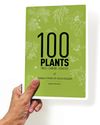
PLANTS IN ECOLOGY AND DESIGN
'100 Plants' offers insight into Delhi's ecology, guiding landscape architects and gardeners to cultivate sustainable, bio-diverse urban landscapes. It is an essential resource for all plant enthusiasts.

LANDSCAPE LUMINAIRES CAPTURING THE ESSENCE OF LANDSCAPES
Landscape luminaires blend with architecture, enhancing safety, security, accentuation, and aesthetics while minimizing light pollution and promoting sustainability for a captivating outdoor experience.
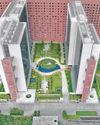
SURAT DIAMOND BOURSE
The landscape design of the corporate-commercial centre, inspired by the five elements of nature and Vastu principles, attempts to create a unique sense of place. It combines design with public art, encouraging a harmonious environment for business and leisure.
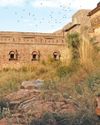
SIX SENSES FORT BARWARA RAJASTHAN
In the transformation of a historic 14th century fort-an erstwhile home of a Rajasthan royal family-into a luxury resort, native plants and indigenous materials play a pivotal role, redefining luxury with ecological sensitivity.
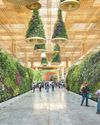
'A TERMINAL IN A GARDEN' PUTTING NATURE AND BIODIVERSITY AT THE HEART OF THE PASSENGER EXPERIENCE
The design of Terminal 2 (T2) at Kempegowda International Airport in Bengaluru is an attempt to provide a sensory and biophilic experience for passengers.
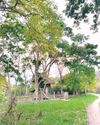
IDEAS OF 'SCENERY' AND 'LANDSCAPE' LINKING GEOGRAPHY WITH LANDSCAPE ARCHITECTURE
The term ‘landscape’ while encompassing natural and human elements, is understood differently among disciplines. Geographers, another set of experts working closely with nature, provide crucial ecological data, aiding landscape architects in creating sustainable designs.
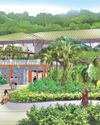
THRISSUR ZOOLOGICAL PARK KERALA
The relocated Zoo aims to showcase rich Western Ghats ecosystems, support nature conservation, and provide immersive visitor experience. The development integrates ecological restoration, architecture and landscape while improving livelihood opportunities of the local community.

ECOLOGY AND LOCAL CULTURE
With a working panel of scientists and experts from different fields of plant and animal ecology, the Nature Conservation Foundation is a Mysore-based NGO, engaged in exploring, understanding, and conserving the natural world through research and responsible engagement with society.
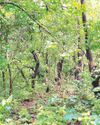
BEAUTY FOLLOWS COMPLEXITY
Designers must heed Sullivan's \"form follows function\" to avoid beauty over function. Following nature in landscape design enhances ecological productivity while promoting sustainability with principles of use of native species, biodiversity, and conservation of natural resources.